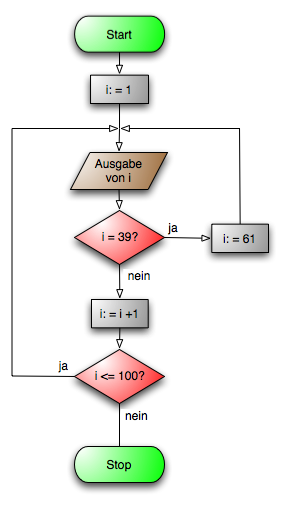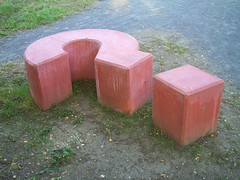I’ve been fortunate to have worked for a number of companies during my career, either as a 3d artist, a compositor or a supervisor. I've observed that while many companies have similar CG production pipelines, the structure does vary. Further, over time, pipeline structures change.
Today we are back to the subject of pipelines with a look at some of the forms a production pipeline may take. But first a quick review of the nature of CG pipelines:
Today we are back to the subject of pipelines with a look at some of the forms a production pipeline may take. But first a quick review of the nature of CG pipelines:
Previous articles focused mostly on helping my readers see pipelines from a broader point of view. I shared an epiphany I had a few years back that there are in any given project three classes of pipelines: production, material and approval (posts #0018, Understanding Pipeline, and #0019, Form Follows Function). These coexist on a project, touching here and there to exchange information, but functioning in parallel, mutually dependent yet separate from one another.
While some may think that the three are really one pipeline, I see them as separate yet vital, largely because when one examines the three dimensions of the pipeline: personnel, tools, and procedures (post #0020, The Technology Is Not the Pipeline), it is evident that in most cases the personnel, tools and procedures for each class of pipeline are unique and separate. While personnel may use tools and procedures from more than one pipeline, the structure and management of each class of pipeline is independent from the others.
I differentiate between work-flows, the steps in a task done by one or more people, and a pipeline, the organization of personnel, tools and procedures to facilitate a work-flow (post #0022, Workflows vs Pipelines). In the same post, I introduce a concept of a Tree of Specialization to show that a work-flow can be divided and redivided into ever greater degrees of specialization.
The first five articles in this series brought us to elaborate the Seven Point Functional Description of Pipelines (post #0023, CG Pipelines Defined). I'll put the description here again for convenience, but if anything in it is unclear, I suggest you read posts #0018, #0019, #0020, #0022, and #0023.
http://www.defense.gov
Seven Point Functional Description
of CG Pipelines
of CG Pipelines
- A CG pipeline belongs to one of three classes:
- production (task) primary
- material (data) secondary
- approval (meta-data) tertiary
- A CG pipeline is comprised of three structural dimensions:
- personnel
- tools
- procedure
- A CG pipeline utilizes technology but is not the technology
- A CG pipeline divides a work-flow into separate and meaningful tasks assigned to two or more persons
- A CG pipeline tasks divisions are determined using a tree of specialization across the three dimensions
- The CG pipeline structural form is dictated by
- the functional mission,
- resources available and
- company culture
- A CG pipeline is malleable
http://www.defense.gov
Any time two or more people get together to do a task, some system of cooperation and division of labor occurs. If a couple of kids get together to do their chores, this may be completely ad hoc, with the dominant personality often suggesting to the other what each one does. A group may get together for a little basketball, and again, they will structure their team to either play zones or one-on-one. In many sports players often specialize: a baseball pitcher, a quarterback, a goalie. Likewise, as the person responsible to run the crew, the CG Supervisor must determine the best form for his team.
Many people working in CG assume that organizing the team, the CG production pipeline, by functional specialty is the only way. While some people will argue the best form divides the work among specialists, working alone or in teams, others may argue that a good pipeline is flat, with strong generalists who can insure contuinity of design vision through a project. It's sort of like the difference between zone and one-on-one basketball: the zone player focuses on developing skills and habits for playing a position, a functional specialization, while the one-on-one player focuses on his opponent, developing a project orientation, while being able to generally play anywhere.
Others will say the best organization is to structure the team around the technology. Another model is to break up the pipeline according to artistic styles, for example, photo-real vs. 3d cartoon vs. stylized, etc.
These four organizational forms: project generalists, functional specialization, technological specialization and style specialization may represent the range of possibilities, but other forms may exist outside my experience and imagination.
Each of these four forms has it’s advantages. Perhaps because it is the most common form, many people erroneously think that a pipeline must be based on specialization of labor or function. In a large company, with 30, 100, or hundreds of artists working on perhaps one project, specialization provides a convenient way to divide the work-flow. As time passes, this specialization increases. For example, “particle systems” (dynamic physics-based simulation) emerged as a specialization around 15-20 years ago. Today there are specialists in cloth, fur, hair, fluids, smoke, fire, explosions, destruction, etc. There are specialists who model hair, descrribing it’s shape, position and length,“combing” it into shape, and other specialists who animate the hair. Within the specialty of surface modeling, there are specialist in organic and inorganic modeling; other modelers may specialize in vehicles, architecture, environments, weapons, creatures, people, and so forth. Artists may specialize according to subject matter, techniques, style, skills and tools.
Specialization according to technology may sound foreign, but it’s quite old, and still quite common today. For example, by the mid 1980’s the CG specializations (let’s not get into non-digital visual effects production specialties here) were four: paint, 3d, real-time video, and compositing. Paint or “2d” involved use of tools where the artist “painted” directly on a digital canvas with limited or no animation capabilities beyond traditional cell techniques. “3d”, involved using 3d computers to indirectly model, animate and render shots. Real-time CG involved the use of tools that could move one or more video polygons in real-time, one system could shape the video texture into 3d objects and morph them. Compositing, as today, put it all together, but the best tools were dedicated compositing systems. A fifth specialty was essential to support these: the programmer. Today, this tradition of specialization by tool continues and is evidenced by job ads for artists who use some certain software, such as Maya, Houdini, Nuke, After Effects to name a few. (There are hundreds.)
Specialization by Style could appear less evident in a CG production pipeline, but it’s actually the first determinant for a studio in designing a pipeline: is the film a visual effects film, with more or less invisible (or believable) effects, like Harry Potter or Lethal Weapon? Or is the project fully animated, like Shrek? Is it 2D, like Ants, or 3D, like Avatar? Whether the project is a film, game, TV documentary or corporate video, the style of the project will ultimately drive what CG production company may get the job and will determine how the CG production pipeline will be structured.
Specialization by Project-Oriented Generalization. Huh? You may rightly ask how generalization can be a specialization, but it is. Suppose your designing a production pipeline that must meet rapidly changing demands, say for a weekly TV show. You may be able to anticipate some specialized needs, but you may need to have mostly generalists who can pretty much take on any kind of problem. Or suppose you have a small boutique with a low volume, you might like to crew with generalists because you don’t know what you need.
The Very Best Form of Production Pipeline
In actual practice these four forms of production pipelines are usually not exclusive. They often co-exist. For example, a film CG production pipeline may be comprised of artists capable of producing within a specific style or genre, using the technologies currently owned by the company, organized according to function. A video CG production pipeline may be comprised of a core team of project-oriented generalists, supported by a few specialists (who may be hired ad hoc as needs change).














